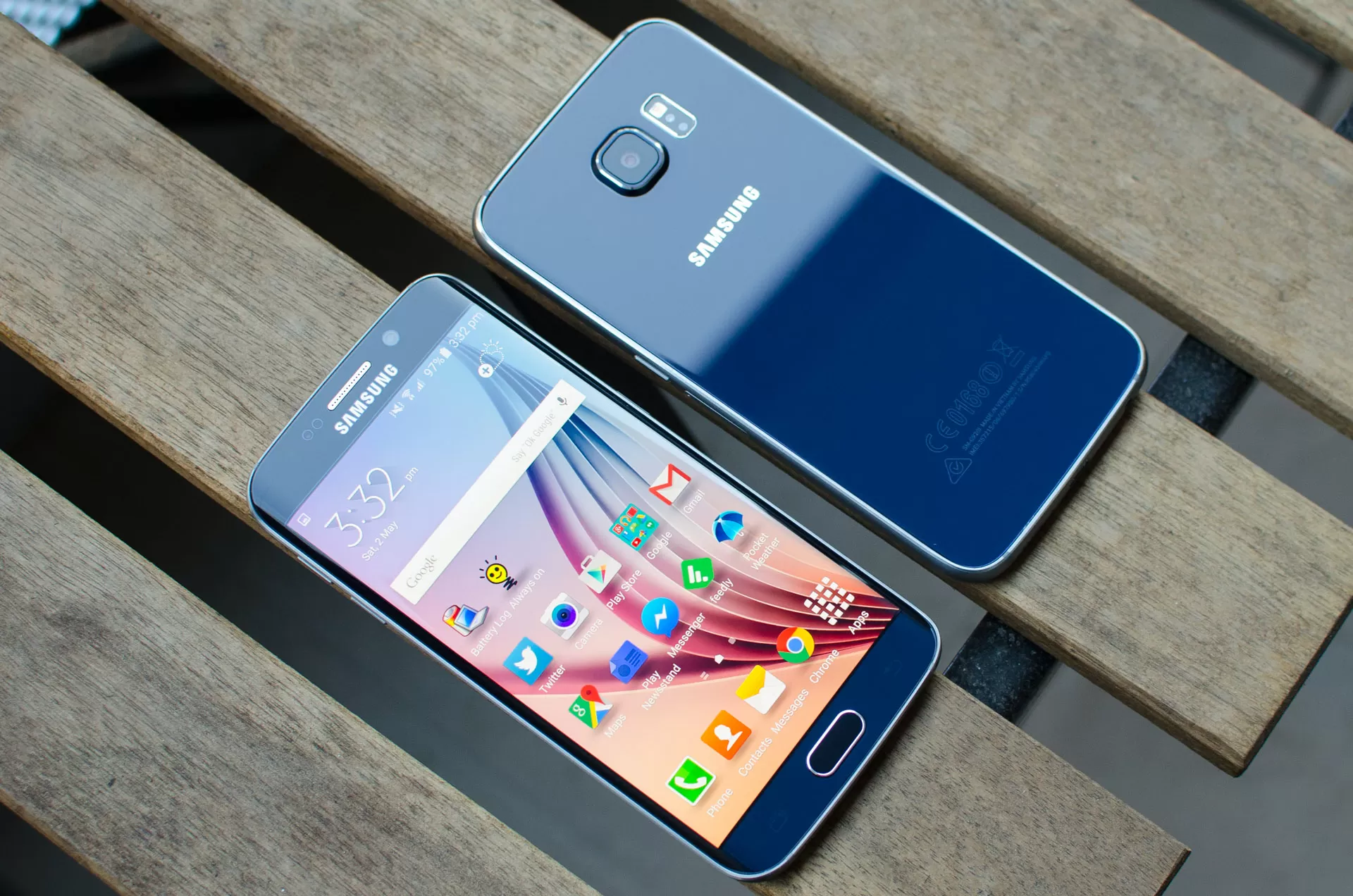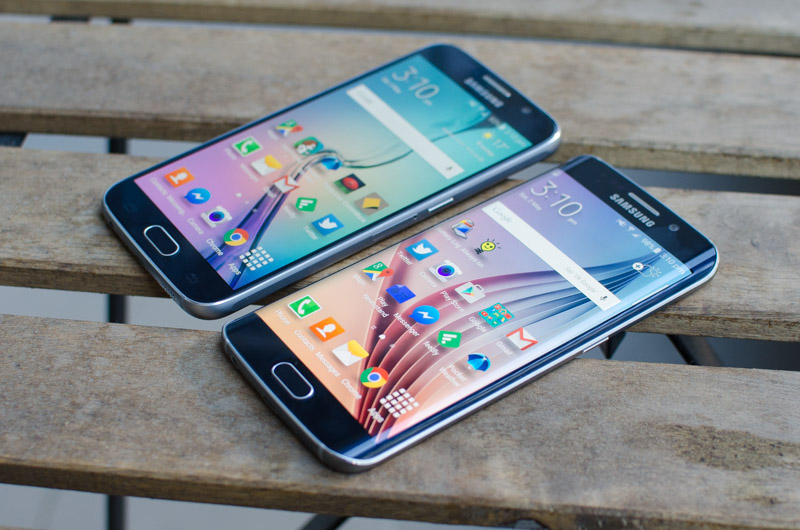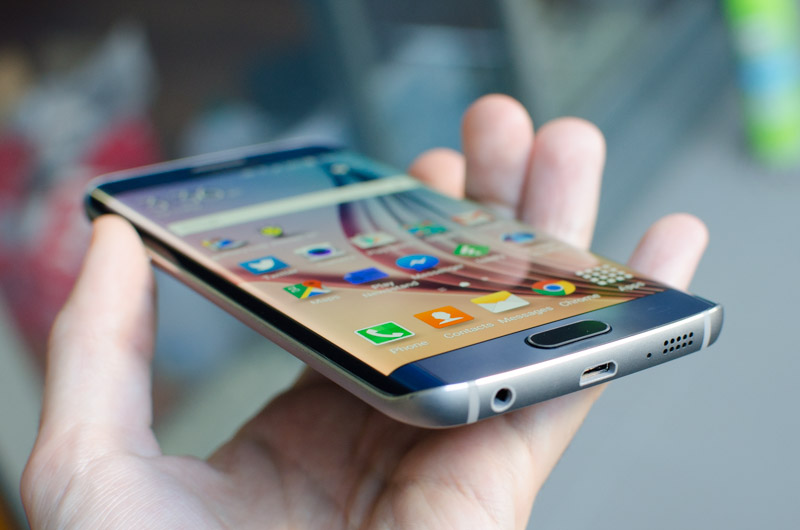The launch of the Samsung Galaxy S6 is one of the most important for Samsung in a long time. The company's smartphone revenues are slipping, profits are down, and competition is stronger than ever. Apple's strong launch of the iPhone 6 heaped a particularly large amount of pressure on the company, especially after the relatively tepid launch of the Galaxy S5.
Noticing that the company was falling behind Apple and other smartphones OEMs in the looks department, Samsung sought to completely revamp the design for their next flagship: the Galaxy S6. Combined with top-of-the-line hardware on every front, this was undoubtedly going to be Samsung's best effort at creating a compelling high-end phone in a long time. It could finally be the Samsung device I can safely recommend.
But this time around there's not just one flagship from Samsung, but two: the company has released a curved-display Edge variant that carries mostly the same hardware as its standard flat-screen brother. Both come with a 5.1-inch Super AMOLED display with a top-end 1440p resolution, a brand new Exynos 7 Octa 7420 SoC, and a 16-megapixel optically stabilized camera. Unlike with the past three generations of Galaxy flagships, there's no Qualcomm model in sight.
The Edge model is particularly interesting, because just like the mediocre Galaxy Note Edge, it brings few new features to the table for an inflated price tag. This time there are two curved edges to contend with, as well as a refined design and better software, but going in to this review I certainly wasn't optimistic about the improvements.
From the moment I unboxed both the Galaxy S6 and the Galaxy S6 Edge, it was clear that these devices have the nicest designs Samsung has ever produced. Late last year the company finally got the message that cheap, crappy plastic isn't good enough for a high-end smartphone, releasing both the Galaxy Alpha and Galaxy Note 4 with a touch of metal. Samsung has refined this further with the S6, opting to use classy, smooth glass on the front and back of the device reminiscent of Sony's Xperia Z line.
The metal around the edges of the Galaxy S6 complements the clean glass on the front and back well from a visual standpoint. Samsung has opted for an attractive matte finish to the aluminium side panels, with comfortable curves and slight sculpting on all sides. And like most phones with metal edges, there are a few polycarbonate strips that break up the solid metal frame to ensure adequate wireless performance.
Like most current flagships, the S6 is available in a range of colors that include black, white and gold. I received the black S6 and S6 Edge to review, which has a slightly blue hue when the reflective glass panels are viewed under strong lighting. This effect is rather unusual, but the reflective panels bereft of texturing look slick and classy from most angles.
When the Galaxy S6 was announced, many comparisons were made between its design and that of the iPhone 6. It's true that the bottom edge that features the 3.5mm audio jack, microUSB 2.0 port and speaker grille is suspiciously close in design to the latest iPhones, but that's where the similarities end. The top edge features just an infrared LED for controlling home theatre equipment, while the left side has the volume buttons, and the right side has the power button.
The S6's bezels to the top and bottom of the display aren't the smallest going around, and that's in part due to the inclusion of offscreen navigation buttons. However the handset is very thin, with most of the body clocking in at 7.0mm thin, or 7.1mm on the S6 Edge (Samsung lists both devices as slightly thinner, but real world measurements tell the full story). I was also pleased by how light both devices are: 138 grams for the S6 and 132 grams for the S6 Edge is pretty svelte for devices that uses large portions of metal and Gorilla Glass 4.
Of the two flagship handsets, the S6 Edge has the nicer visual design. The way the screen curves away to either side is unlike any other phone on the market, and this creates a very swooshable front panel. The curvature of the metal edges also adds that extra bit of interest that you simply don't get with the regular Galaxy S6, and it's head and shoulders above the awkward, lop-sided look of the Note Edge.
However I wouldn't say the Galaxy S6 or the S6 Edge have the nicest smartphone designs I've ever seen. The iPhone 6 has a more refined body that continues to set the standard for seamless craftsmanship, and I still love the full-metal design of HTC's latest smartphones, including the One M9. But for the first time ever, I can comfortably say the Galaxy S6 is right up there with the best designed phones on the market.
Unfortunately the beautiful Galaxy S6 design comes with a number of pretty significant trade-offs compared to its predecessor. The use of glass on the front and back, coupled with relatively smooth metal, makes the S6 an extremely slippery handset. You're going to need a firm grip on this device, or there's a good chance it will slide out of your hand and end in disaster.
Samsung has also removed two features that select users loved about the Galaxy line. The S6 doesn't come with a removable battery - which isn't a big deal considering a sealed battery leads to a slimmer, more elegant design - but more importantly there's no microSD card slot. Smartphone OEMs continue to rip consumers off with the pricing of higher capacity devices, and microSD cards have been a great way to combat this. Without the inclusion of expandable storage though, you're forced to pay exorbitant amounts for more internal storage, which is an unacceptable solution.
And it's not like Samsung couldn't have implemented a microSD card slot on a device without a removable back cover. The company already implemented a nano-SIM tray below the S6's power button (or on the top edge of the S6 Edge), so there's no good reason why there couldn't be another tray to facilitate expandable storage.
While the regular S6 is generally a very comfortable device to hold and operate, despite its slippery body, the same can't be said for the S6 Edge. Like with the Note Edge, this is down to the relatively sharp metal edge below the curved display on either side. As the display's curve is gentler on the S6 Edge, the device is easier to hold than the Note Edge, but the outward-angled metal sides aren't as comfortable to grip as the regular S6, even though it reduces the slipperiness somewhat.
The side buttons on the S6 Edge, particularly the power button, also aren't as ergonomically positioned as they are on the regular S6. Due to the angle of the metal edge and their slimmer design, they're harder to hit; another compromise relating to the curved display. Luckily Samsung had the sense to move the power button from the top edge, which is where it was positioned on the Note Edge, although usability still remains an issue.















